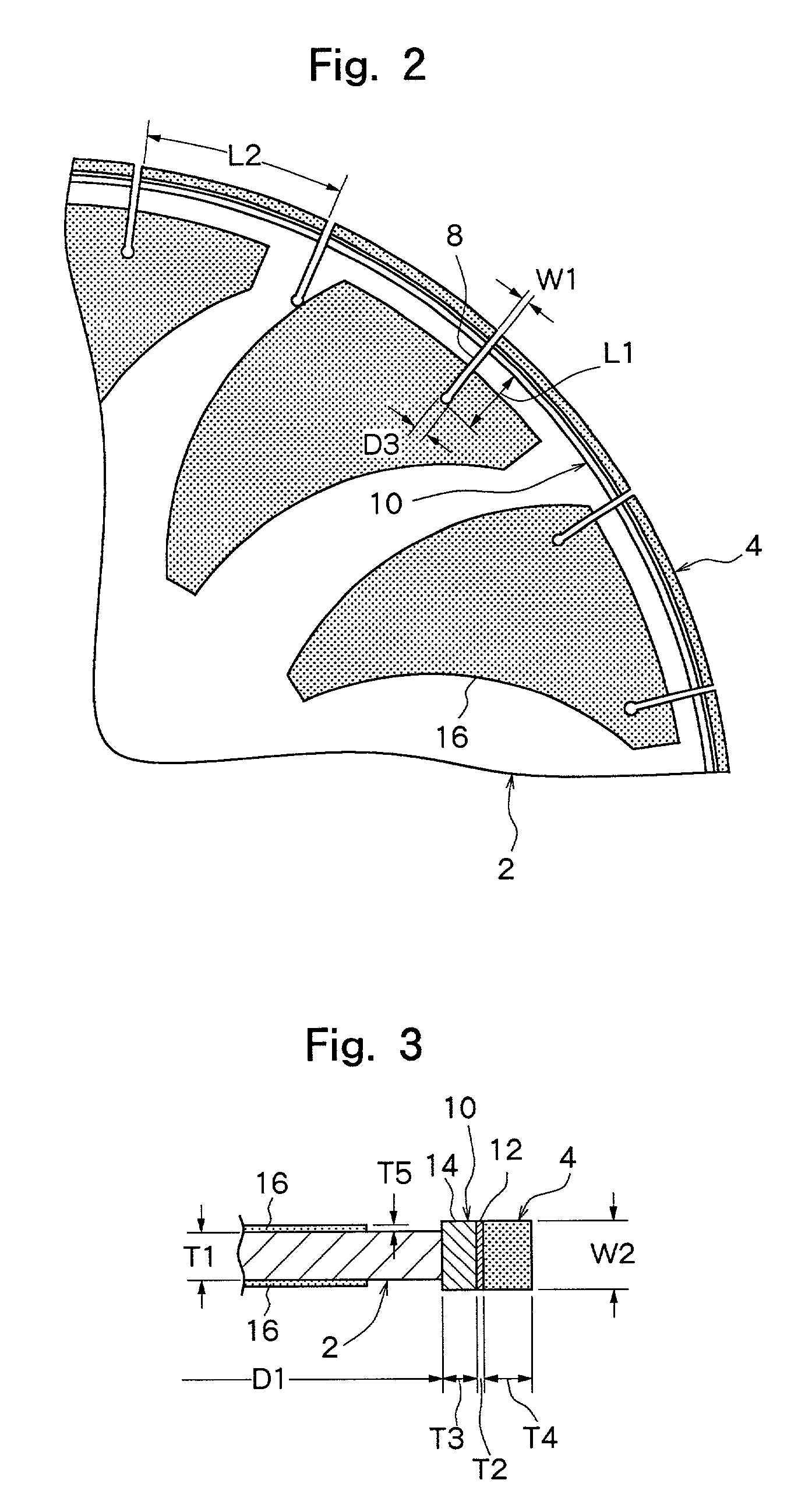Cutting tool
- Summary
- Abstract
- Description
- Claims
- Application Information
AI Technical Summary
Benefits of technology
Problems solved by technology
Method used
Image
Examples
example 6 to 10
[0021] Five cutting tools were produced in the same manner as in Examples 1 to 5, except that an abrasive grain electrodeposited layer in a configuration as shown in FIGS. 1 to 3 was disposed on each of the side surfaces of the base plate. The abrasive grain electrodeposited layer was formed by electrodepositing silicon carbide particles with a particle size of 100 to 120 .mu.m with the use of nickel as a metal for electroplating. The thickness T5 of the abrasive grain electrodeposited layer was 200 .mu.m, and the volume ratio of the abrasive grains was 37.5 (concentration: 150). The same cutting test as in Examples 1 to 5 was conducted. The results are shown in Table 1.
1 TABLE 1 Life Cutting speed (seconds) (no. of cuttings) Maximum Minimum Average Ex. 1 1463 28 50 46 Ex. 2 1497 30 48 44 Ex. 3 1471 31 51 48 Ex. 4 1452 32 48 43 Ex. 5 1517 34 46 45 Comp. Ex. 1 600 38 60 50 Comp. Ex. 2 862 40 64 53 Comp. Ex. 3 953 37 63 56 Comp. Ex. 4 701 42 62 51 Comp. Ex. 5 539 43 65 55 Ex. 6 1521 2...
PUM
| Property | Measurement | Unit |
|---|---|---|
| Abrasive | aaaaa | aaaaa |
Abstract
Description
Claims
Application Information
 Login to View More
Login to View More - R&D
- Intellectual Property
- Life Sciences
- Materials
- Tech Scout
- Unparalleled Data Quality
- Higher Quality Content
- 60% Fewer Hallucinations
Browse by: Latest US Patents, China's latest patents, Technical Efficacy Thesaurus, Application Domain, Technology Topic, Popular Technical Reports.
© 2025 PatSnap. All rights reserved.Legal|Privacy policy|Modern Slavery Act Transparency Statement|Sitemap|About US| Contact US: help@patsnap.com



